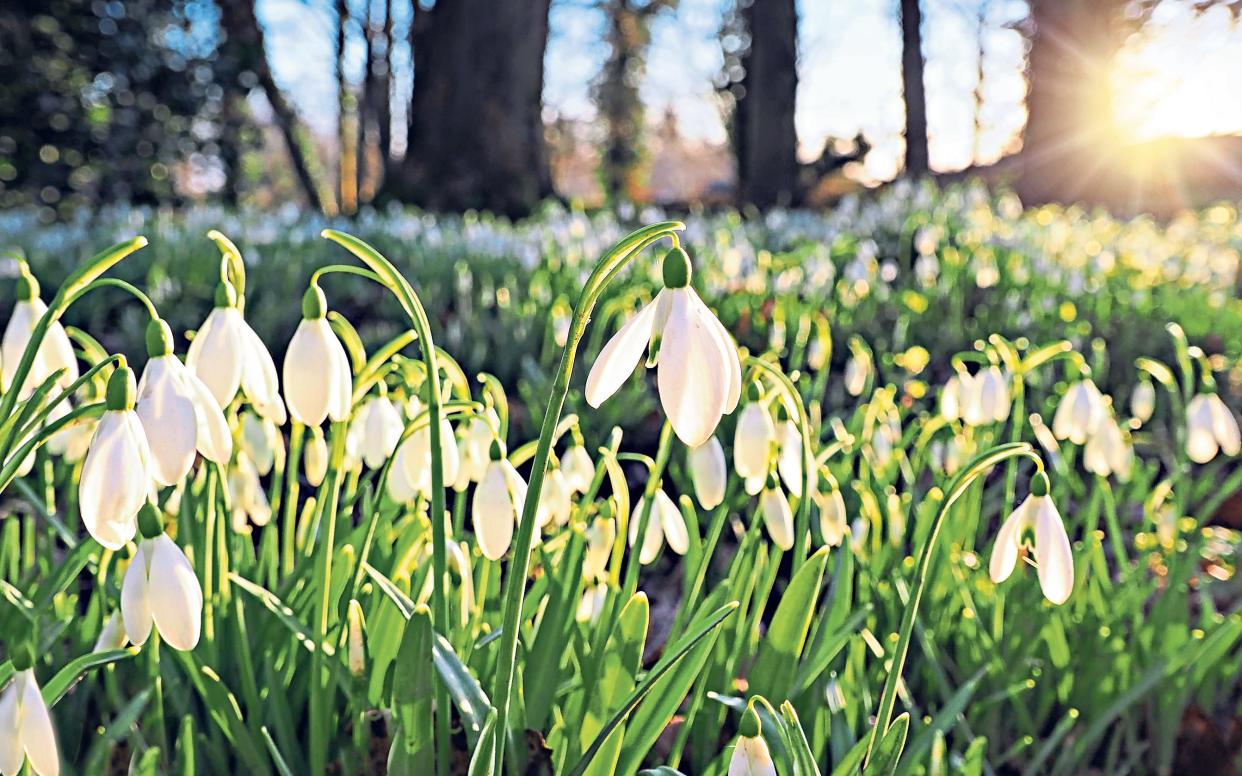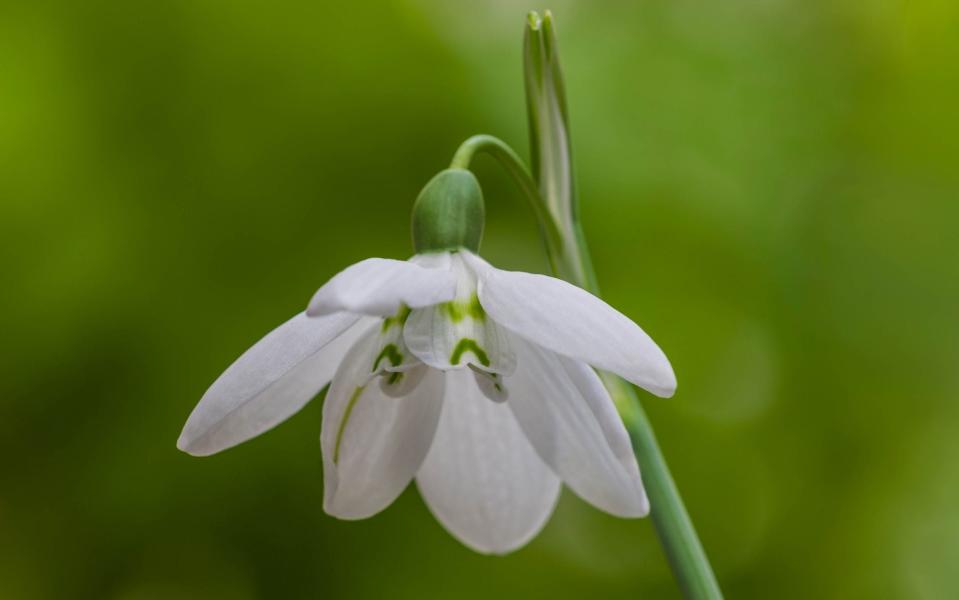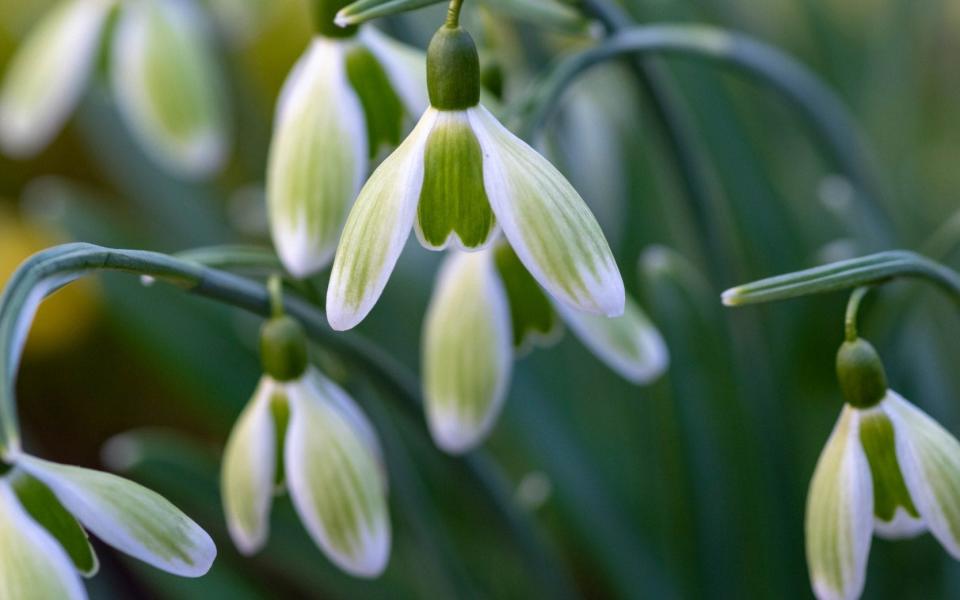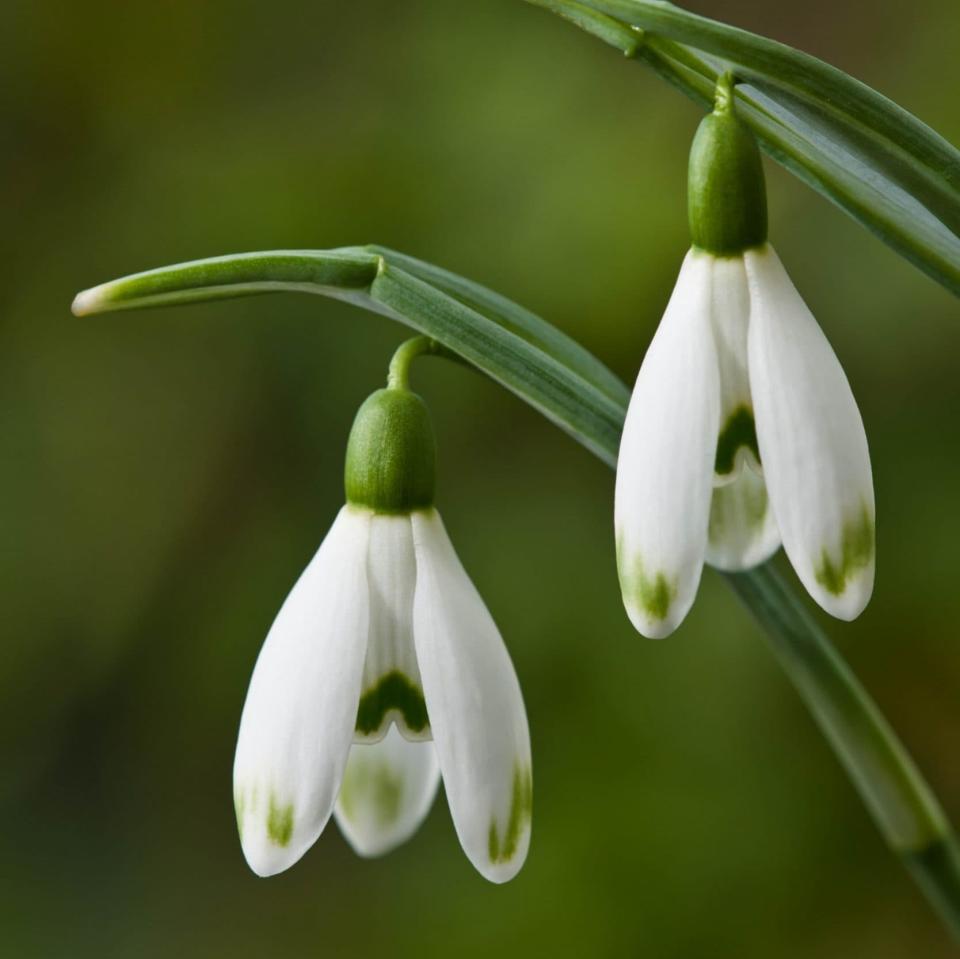The top 10 snowdrop varieties to plant in your garden

Every year, headline-grabbing snowdrops change hands on eBay for enormous sums. In February 2015, Joe Sharman’s deliberately bred and appropriately named ‘Golden Fleece’ went for an eye-watering £1,390.
But, as I know to my cost, an expensive snowdrop is not necessarily a good garden plant. Some resolutely refuse to bulk up, making more impact on your bank balance than on your garden. And demand constantly outstrips supply, so the price never comes down.
I’ve had just two bulbs of Galanthus nivalis ‘Flocon de Neige’, a six-petalled snowdrop, for years. I have also grown the pixie-hatted G. plicatus ‘Trym’ since 1997, but still have only a few flowers.
However, some expensive snowdrops have real vigour, probably due to some hybrid blood, so they thrive in everyone’s garden and get passed on to friends. Prices quickly tumble.
The superb six-petalled G. plicatus ‘EA Bowles’ fetched £120 per bulb in its first year, but went for half that in the following year. It lingers on sale benches now, purely because it’s such a good doer. The following 10 are excellent and distinctive, so you won’t have to worry about losing the label!
Galanthus elwesii ‘Mrs Macnamara’ AGM
This is one of the very best early snowdrops, often out at Christmas time. The pale grey foliage indicates a preference for a brighter position and I find my clump thrives on the sunnier side of an apricot.
The single flowers are decidedly elegant, with crisp, dark-green inner marks, and they’re held on taller stems so they resist inclement weather really well. Mrs Macnamara was Dylan Thomas’s mother-in-law and this elegant snowdrop may have Irish origins for Yvonne Macnamara’s father, Henry Vee Macnamara, had two estates in County Clare.
Mrs Macnamara had a difficult relationship with Thomas: she’s thought to have burnt his notebooks after his death. However, one of her ancestral homes, Ennistymon House, is now the Falls Hotel with a Dylan Thomas bar!
Galanthus woronowii ‘Elizabeth Harrison’
This is the only yellow form of Galanthus woronowii, a squat snowdrop with wide green leaves. This unique yellow seedling, produced by foraging bees, was found in Elizabeth Harrison’s Dunblane garden in 2002. Scottish snowdrop grower Ian Christie realised its importance and the first available bulb was auctioned on eBay and bought by Thompson & Morgan for £725.
Although brilliant publicity, ‘Elizabeth Harrison’ is notoriously difficult to propagate by chipping, ie to cut into slivers, because it’s slimy. Like all yellows, it needs to get the spring sunshine on its flowers.
The greentipped ‘Cider with Rosie’, discovered in a Tewkesbury garden centre by perry maker Kevin Minchew, is an indicator of what could be lurking in your local garden centre.
Galanthus plicatus ‘E A Bowles’ AGM
This is one of my latest-flowering snowdrops and one of my most substantial, with enormous globular white flowers held above green foliage. It was spotted by Michael Myers in 2002, rising above long grass at Myddelton House near Enfield, which is the former home of E A Bowles.
Bowles, who coined the term “galanthophile”, did a watercolour painting of a six-petalled snowdrop in 1912. It is held in the RHS Lindley Library. I am also fond of the dumpy seer sucker-textured ‘Augustus’, named after Edward Augustus Bowles, who was affectionately known as Gussie.
Galanthus elwesii ‘Godfrey Owen’ AGM

Another six-petalled snowdrop, but the shorter-stemmed flowers open to form Tiffany-style lamps. Margaret Owen, the late and much-missed galanthophile, found it in a Shropshire churchyard and named it after her late husband.
‘Godfrey Owen’ spaces itself out as it increases and flowers reliably every year, so this grey-leaved poculiform (shaped like a pixie hat) snowdrop is literally a star performer.
Galanthus ‘Spindlestone Surprise’ AGM

Yellow snowdrops need a spot where winter sunshine falls, to illuminate their liquid gold colouring. This strong hybrid is one of the best, but it is shrouded in mystery. Yellow forms of G. nivalis are found in certain woods in Northumberland and Spindlestone Nursery named this one. It caused a sensation when it was exhibited at the RHS London Show in February 1997 and I was lucky enough to be there.
However, a few days earlier, I had seen a similar yellow in the late Primrose Warburg’s South Hayes Garden, just one flower against the house wall with a label saying “PC”. Debate still rages about whether ‘Primrose Warburg’ and ‘Spindlestone Surprise’ are the same plant, or not. A portmanteau alternative (which will please no one) might be Primrose Spindlestone! Joe Sharman’s G. plicatus ‘Madeleine’ (2002), a seedling named for his niece, is also outstanding.
Galanthus plicatus ‘Diggory’ AGM
The large seersucker-textured flowers have flattened bottoms, shaped like a port decanter, so this large snowdrop is among the most distinctive of all. It was found in 1993, by galanthophiles Rosie Steele and Richard Hobbs, among a naturalised colony in a garden at Wells-next-the-Sea in Norfolk. Rosie named it after her late son, Diggory Birtles. It likes better drainage than most plicates, perhaps due to its East Anglian roots.
Galanthus elwesii ‘Comet’ AGM
This green-veined, grey-leaved snowdrop is a really strong grower, although the green tips on the petals are somewhat elusive – I have no idea why. Although it came from John Morley, of North Green Snowdrops, in the 1990s, it was first seen in RHS Wisley’s Rock Garden in the early 1980s, when Ken Aslet was supervisor. The long tail of the Kohoutek Comet of 1973 inspired the name, because the beautifully shaped outer petals are extremely long.
Galanthus ‘Trumps’ AGM
This is perhaps the most willing snowdrop I grow, when it comes to bulking up, forming sizeable clumps of early flowers. It was spotted in the late 1990s by Matt Bishop, while he was visiting John Morley’s private garden.
The spoon-shaped outer petals curve outwards, displaying a heart-shaped mark, and the inners have a wide green band. This seedling, obviously involving G. plicatus ‘Trym’, has been joined by ‘Trumpolute’, ‘Trym Baby’, ‘Trymming’, ‘Tryzm’ and ‘Trimmer’, but none are as good as ‘Trumps’.
Galanthus nivalis ‘Green Tear’

This is the best virescent, or green-washed, snowdrop of all when it comes to making clumps. However, it’s another one that’s beginning to linger on the sales bench because it bulks up so well. I have given many away in the past, yet ‘Green Tear’ was only found by Gert-Jan van der Kolk in 2000.
The inner petals are a solid green and the outers are heavily colour-washed in green, but show white tips. It makes such a good clump, which leads me to question whether it might have hybrid blood despite being found in a colony of Galanthus nivalis near Zutphen in the Netherlands.
Galanthus nivalis ‘Viridapice’ AGM

E A Bowles painted ‘Viridapice’ in 1912, showing the large leafy spathe rising above green-tipped outers. His notes record the name Maximus alongside the name van Tubergen and Viridapice by Barr.
The original was found near an old farmhouse in northern Holland in the early 20th century, by bulb grower Mr J M C Hoog, a nephew of Cornelius Gerrit van Tubergen. If you can find a good form, this handsome clean-cut snowdrop, a triploid form of Galanthus nivalis, will form eye-catching clumps.
Top tips
Buy potted snowdrops from a reputable supplier in spring. Get them in the ground asap, before the roots freeze
If you’re nervous, invest in 11 sq cm pond baskets, sold by aquatic suppliers. Mix up good loam-based compost, coarse grit and perlite. Carefully upend your snowdrop and pop it into the basket, disturbing the roots as little as possible, and then plunge it into the ground with a label
A safe way of dividing a mature clump of snowdrops – as advised by Alan Street, of Avon Bulbs: If a clump becomes over large and you want to divide it, wait until it starts to die back. If you lift it in flower you can lose the lot. Carefully lift the whole clump and break away a half and then replace one half into the hole. Replant the other part of the clump elsewhere.


